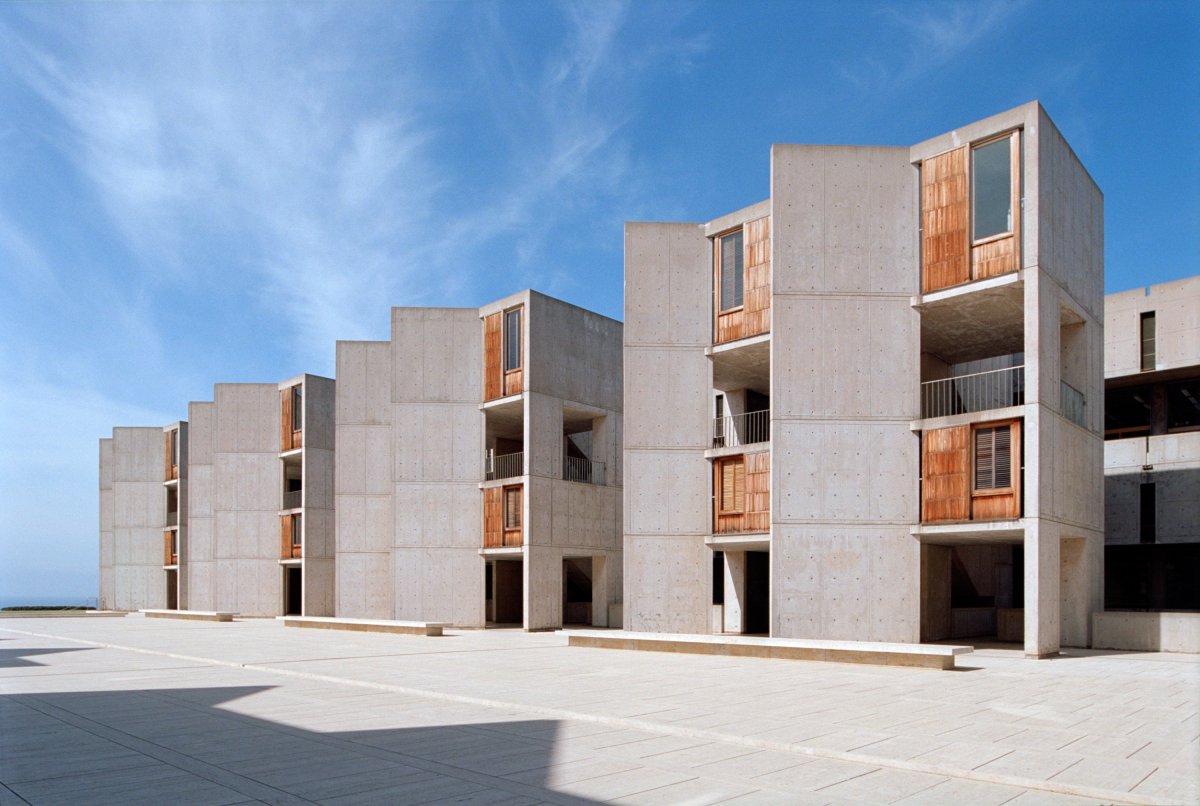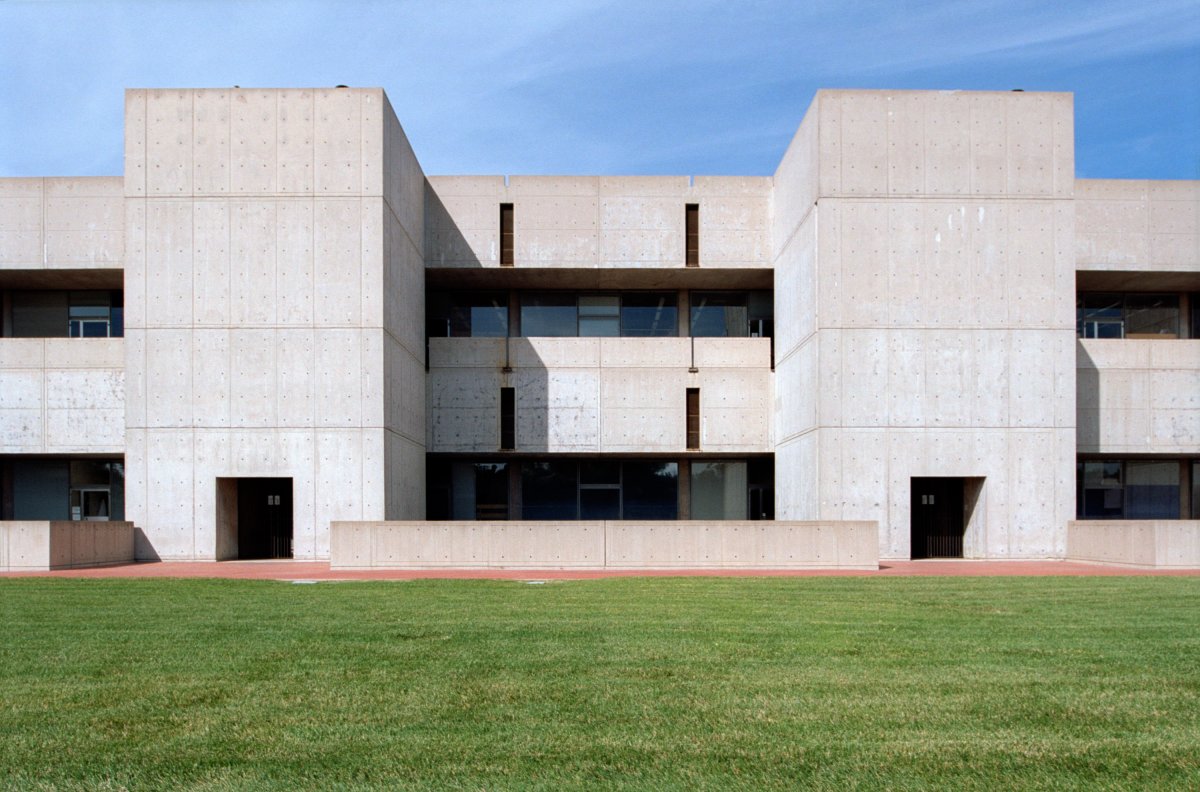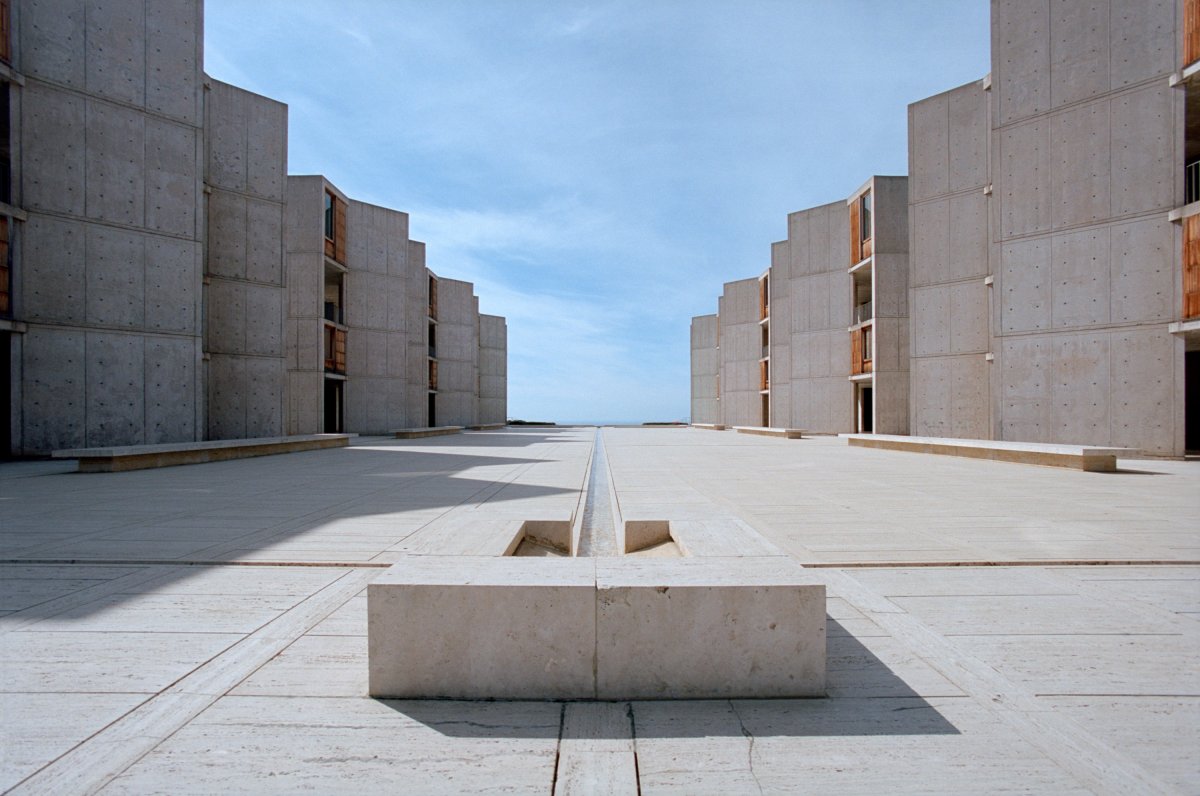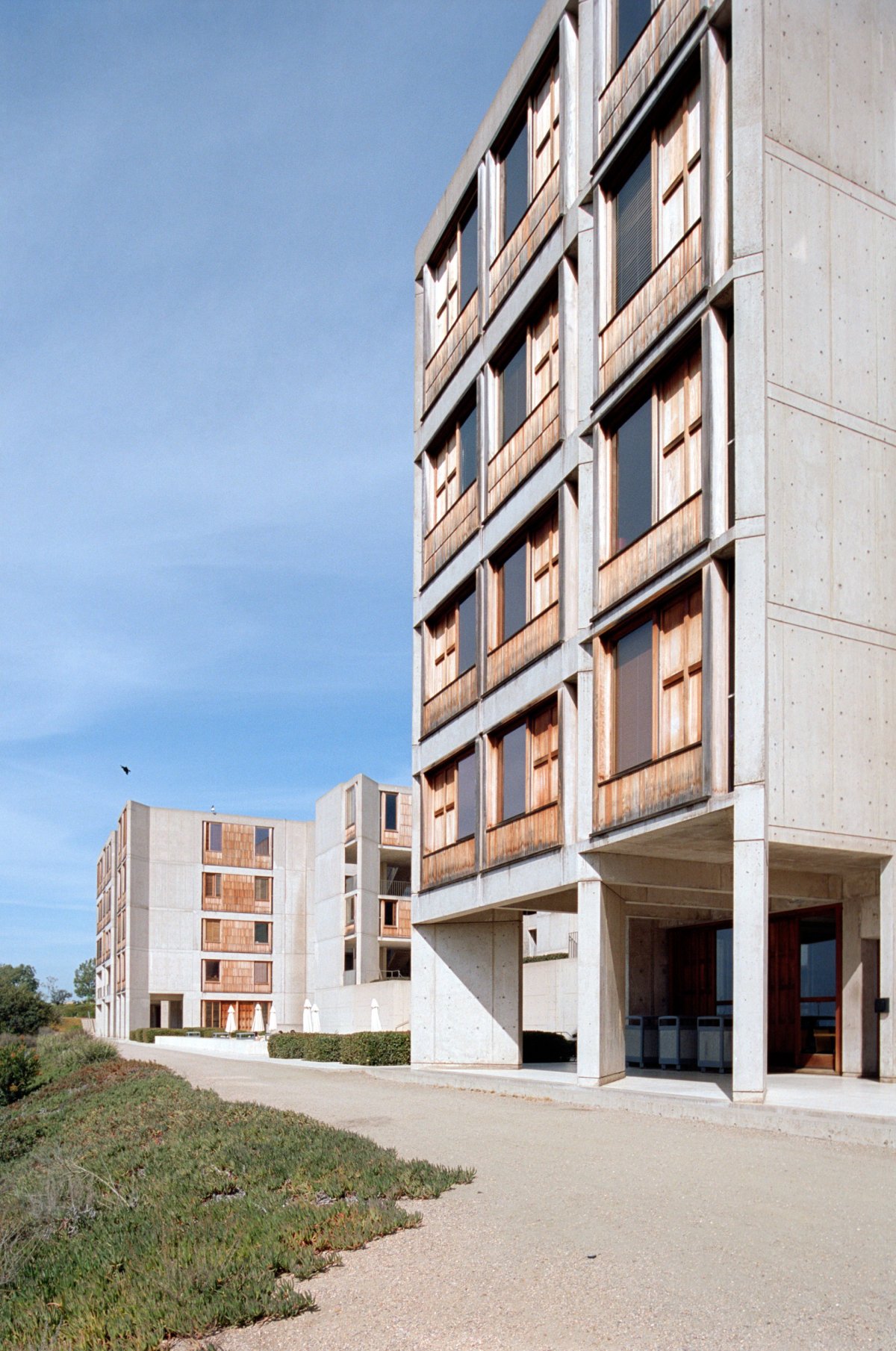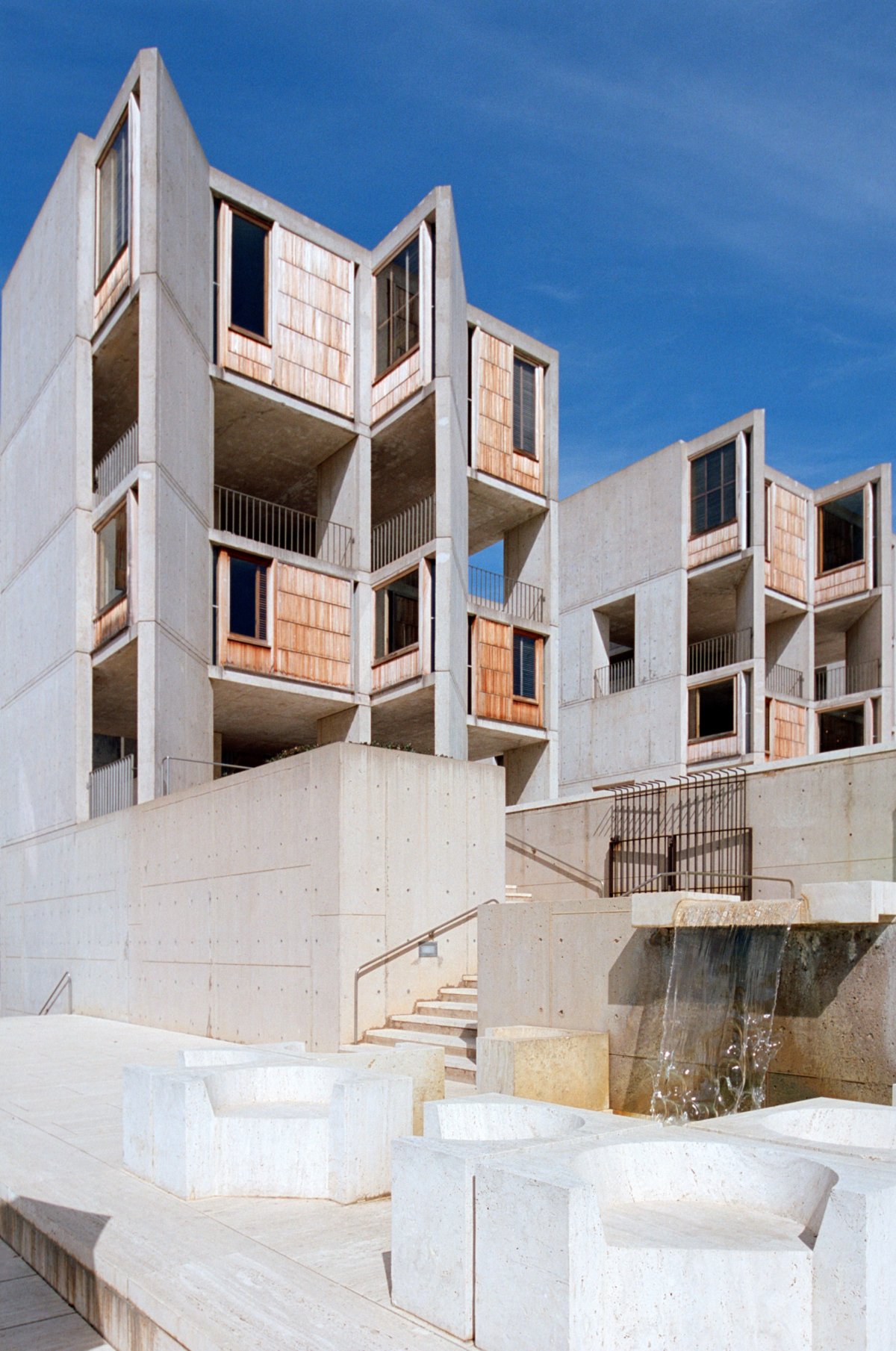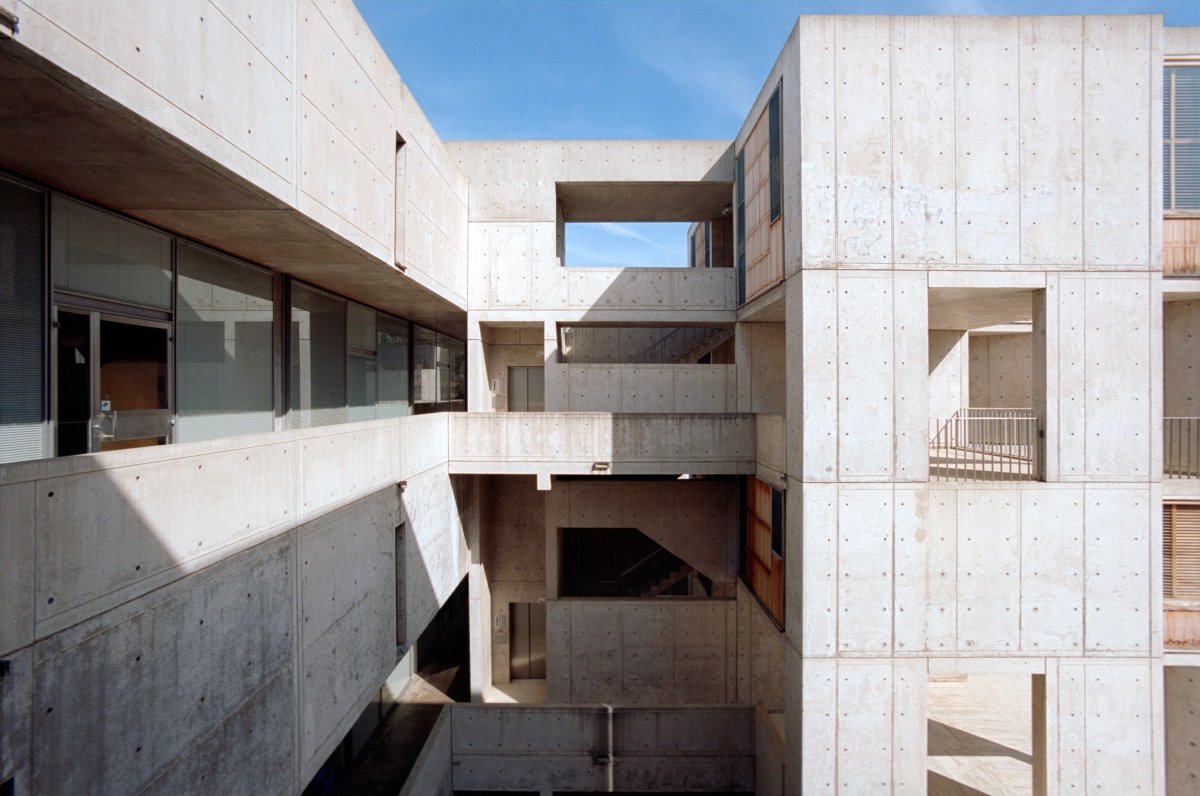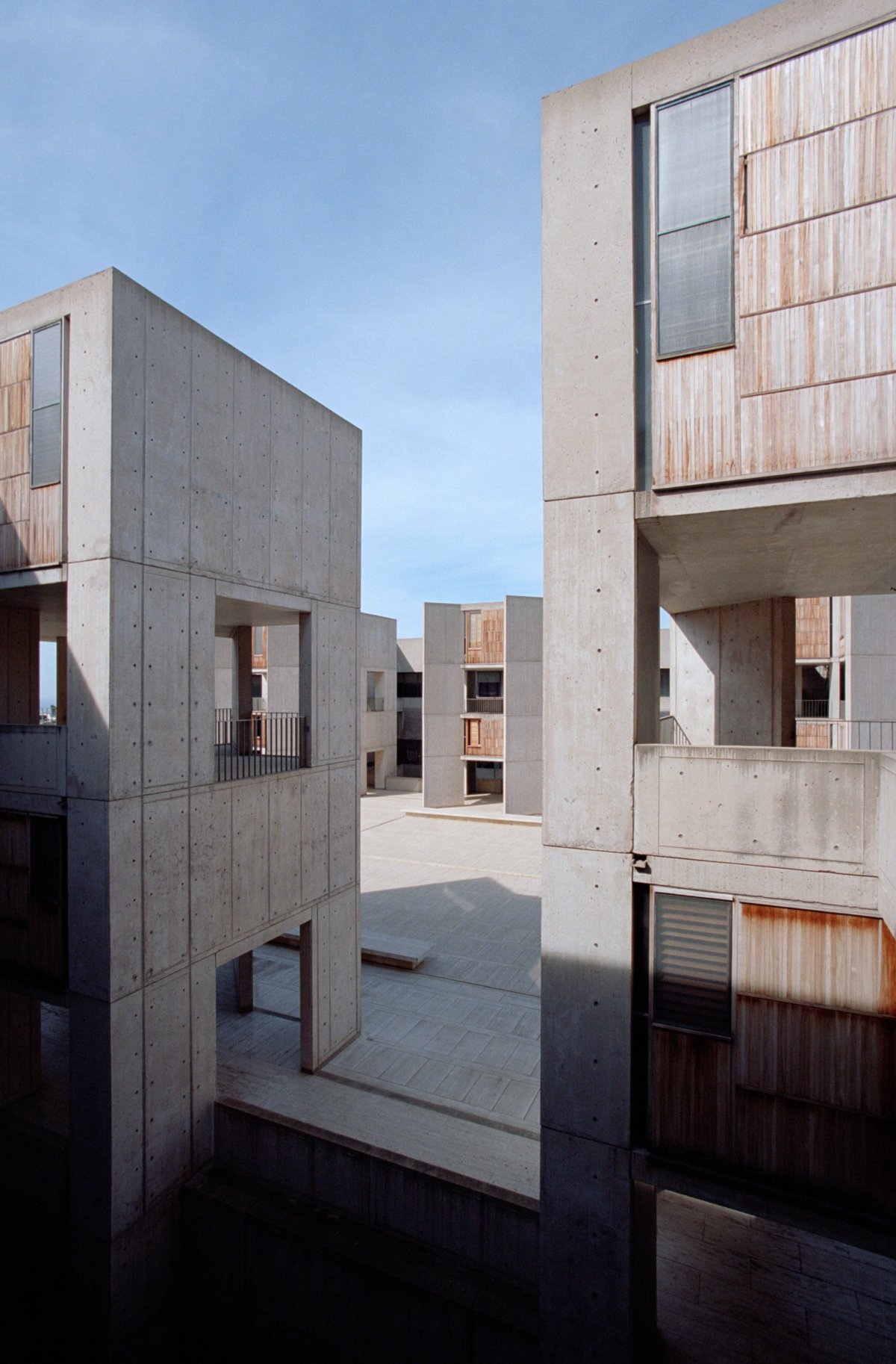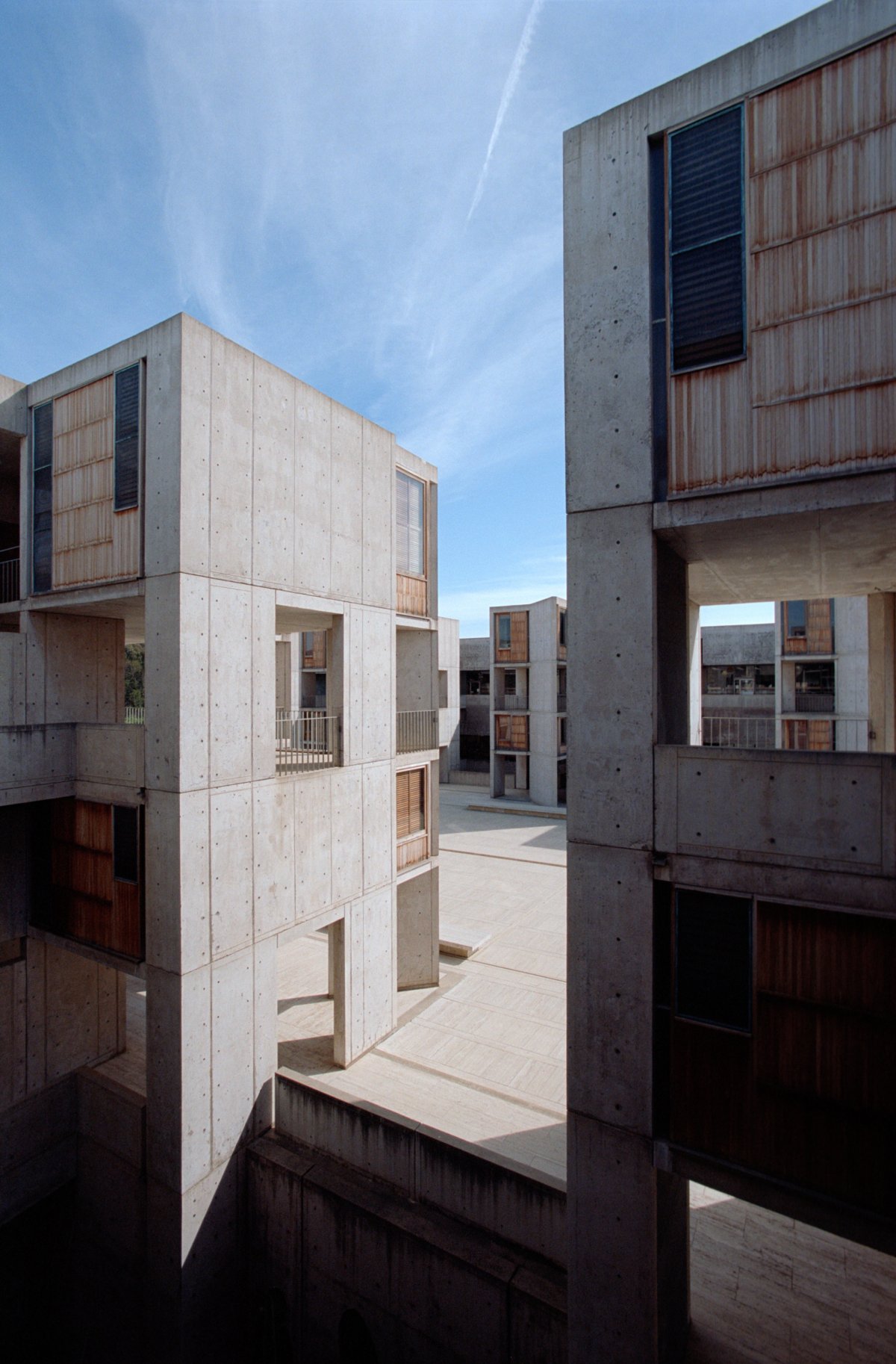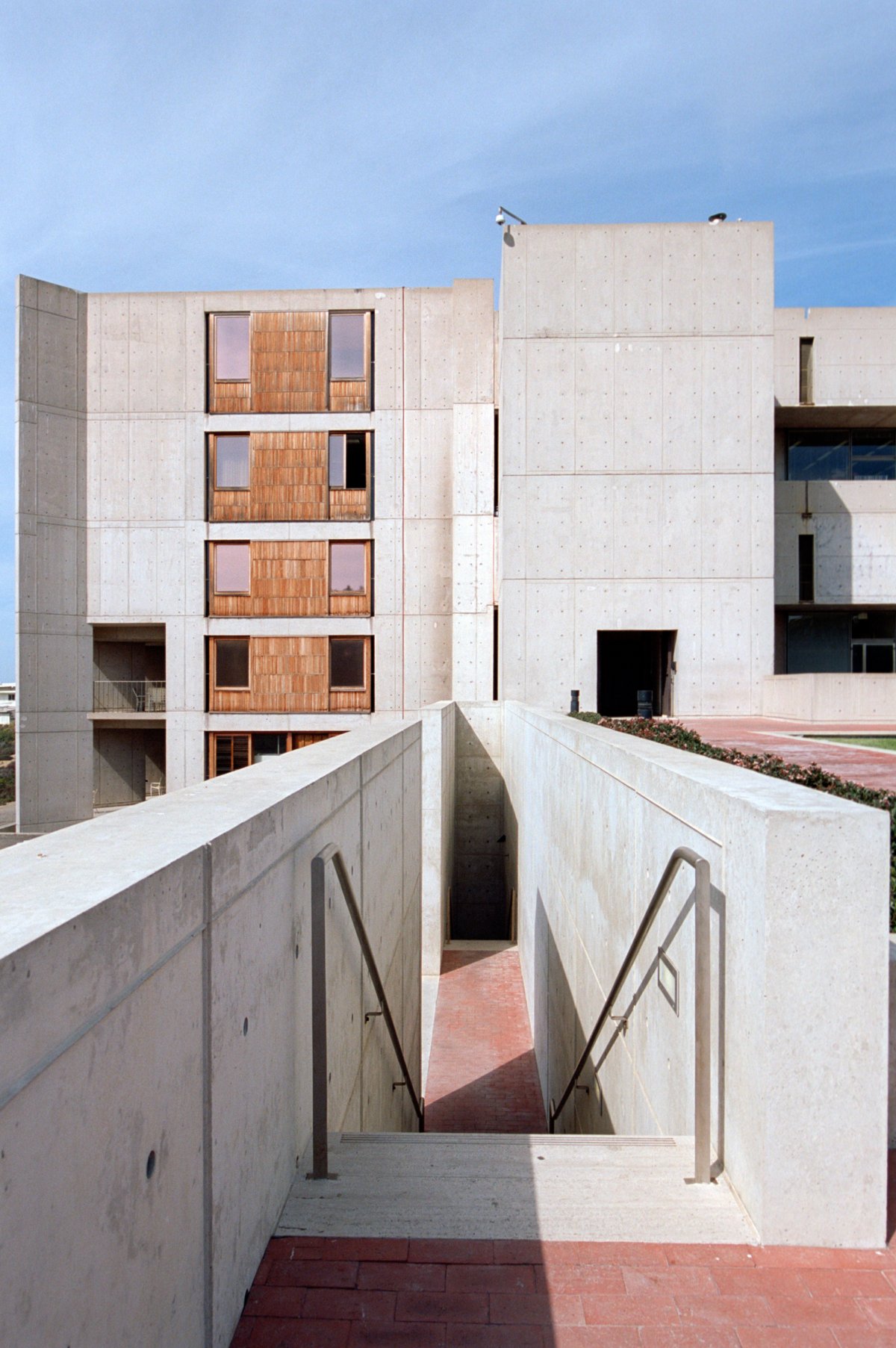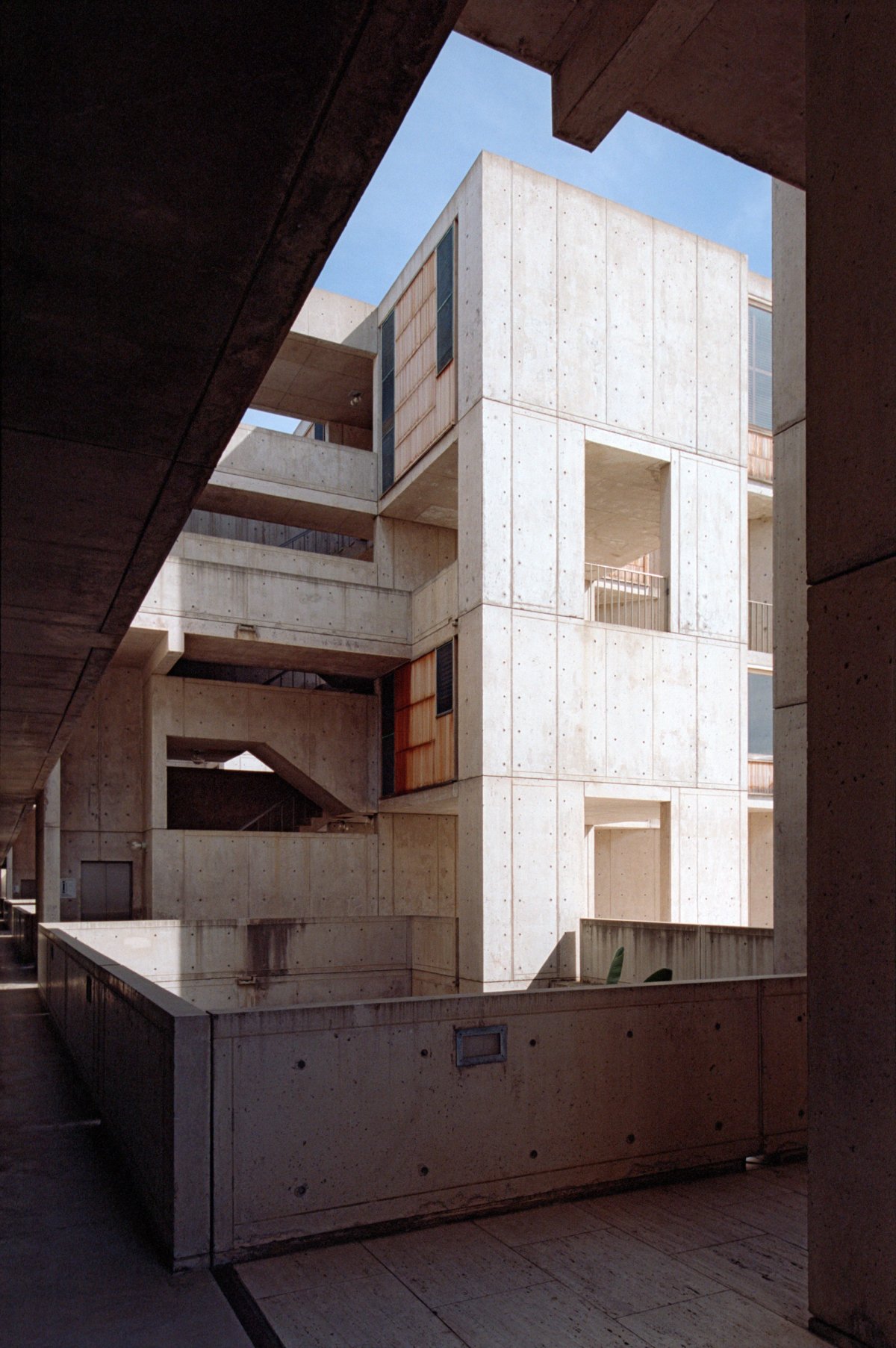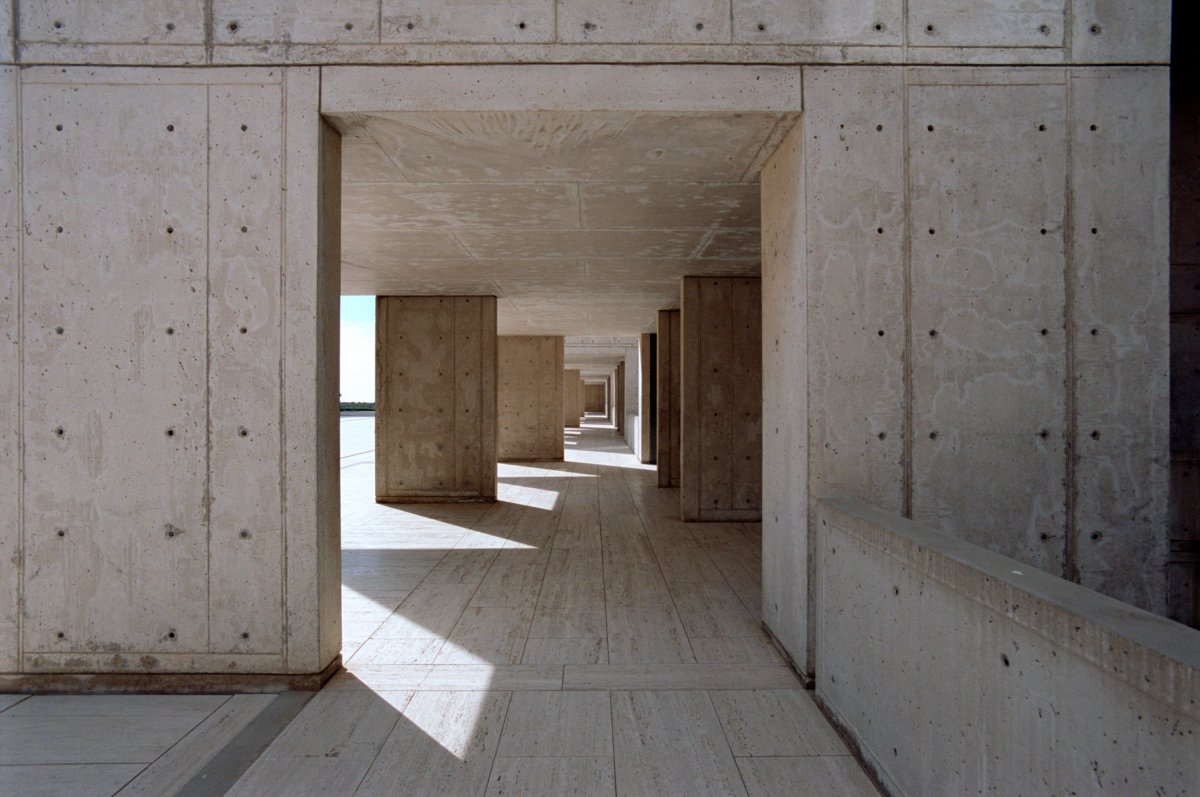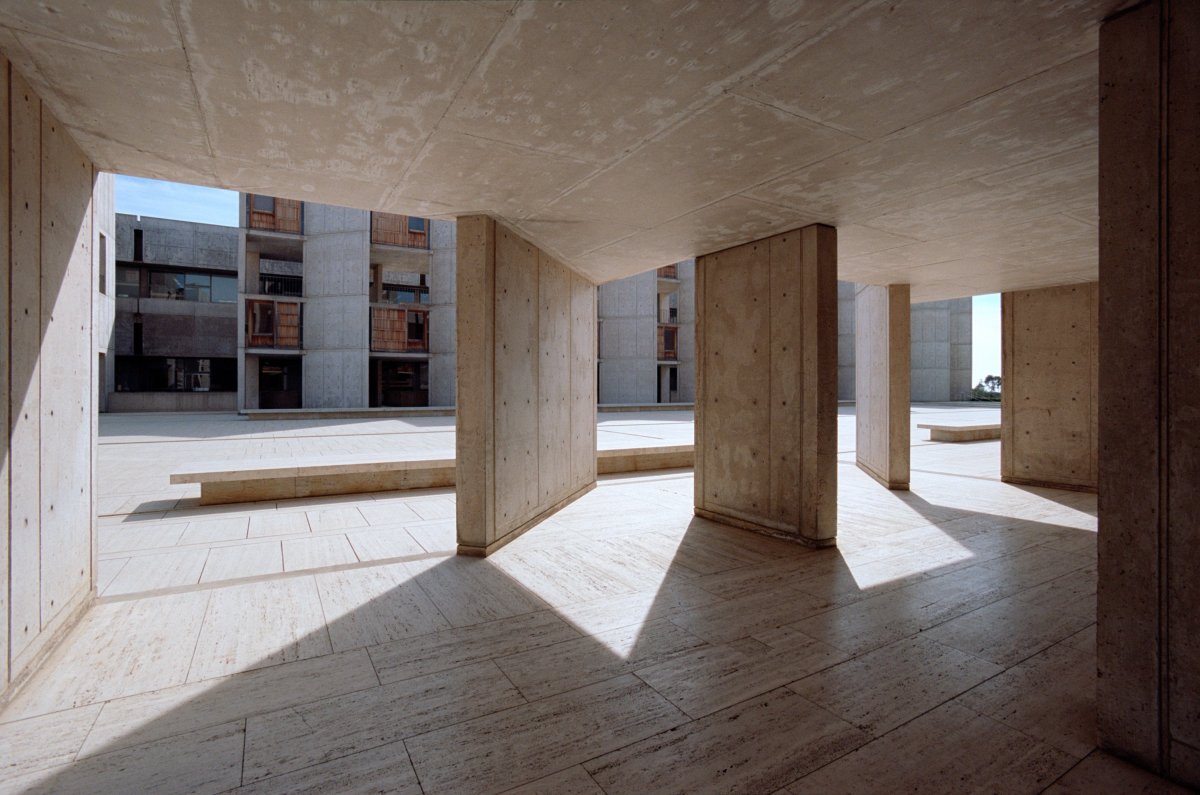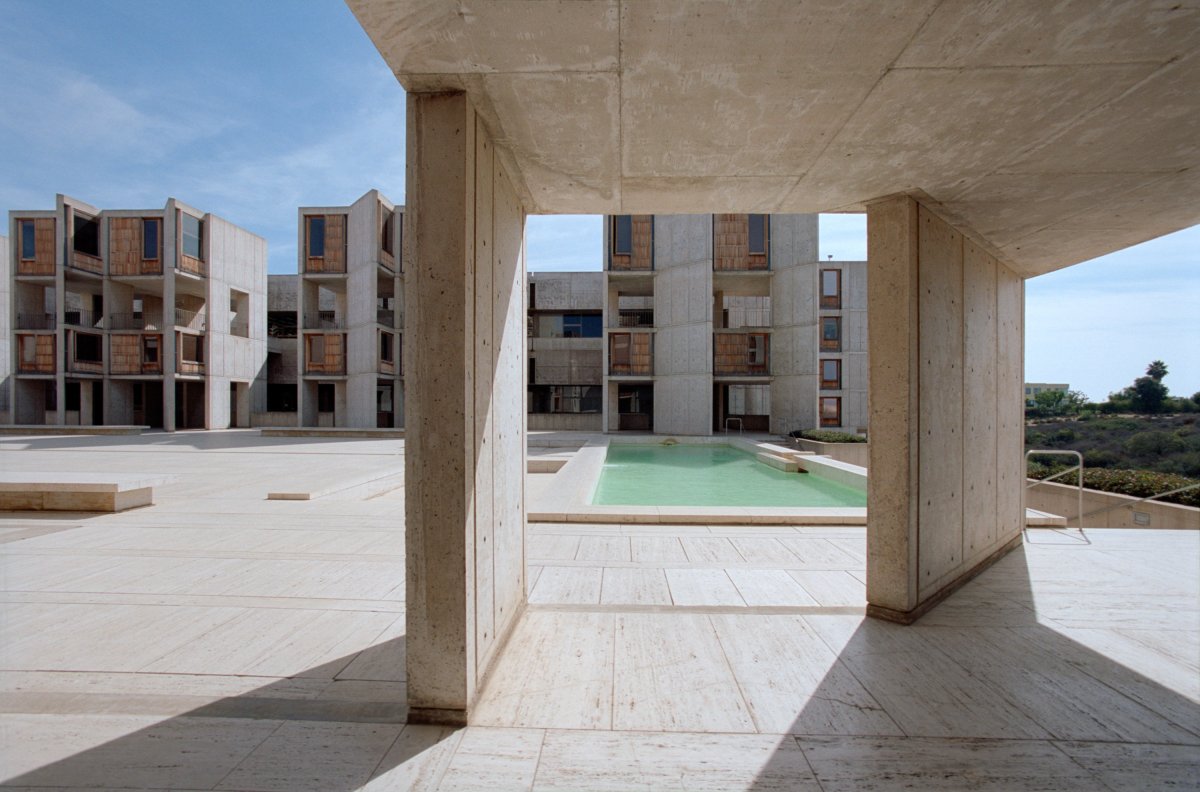
Salk Institute for Biological Studies(Photo by Xavier de Jaureguiberry)
In 1959, Jonas Salk, the man who had discovered the vaccine for polio, approached Louis I. Kahn with a project. The city of San Diego, California had gifted him with a picturesque site in La Jolla along the Pacific coast, where Salk intended to found and build a biological research center.
Salk, whose vaccine had already had a profound impact on the prevention of the disease, was adamant that the design for this new facility should explore the implications of the sciences for humanity. He also had a broader, if no less profound, directive for his chosen architect: to “create a facility worthy of a visit by Picasso.” The result was the Salk Institute, a facility lauded for both its functionality and its striking aesthetics – and the manner in which each supports the other.
Kahn’s scheme for the Institute is spatially orchestrated in a similar way to a monastery: a secluded intellectual community. Three zones were to stand apart, all facing the ocean to the west: the Meeting House, the Village, and the laboratories. The Meeting House was to be a large community and conference venue, while the Village was to have provided living quarters; each part of the complex would then have been separated from its parallel neighbors by a water garden. Ultimately, the Meeting House and Village were cut from the project, and only the laboratories were built.
The laboratories of the Salk Institute, first conceived as a pair of towers separated by a garden, evolved into two elongated blocks mirroring each other across a paved plaza. The central court is lined by a series of detached towers whose diagonal protrusions allow for windows facing westward onto the ocean.
These towers are connected to the rectangular laboratory blocks by small bridges, providing passage across the rifts of the two sunken courts which allow natural light to permeate into the research spaces below. Kahn included these courts not only as light wells, but as references to the cloisters of the monastery of St. Francis of Assisi – an example for which Salk had previously expressed his admiration.
- Architect: Louis Isadore Kahn(1901-1974)
- Photos: Xavier de jaureguiberry
- Words: Qianqian

